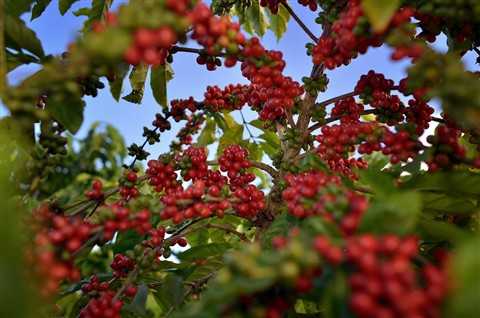SAO PAULO, Brazil – The harvesting of the 2020/21 robusta coffee crop is expected to end in early August in Brazil, reports Cepea. In Rondônia State, activities ended in the first fortnight of July, and in Espírito Santo (ES), less than 10% of the output estimated for the state needed to be harvested in late July, according to Cepea collaborators.
In Rondônia, production was high and quality, satisfactory in the season, while in Espírito Santo, the output was from 20 to 30% lower than that in the previous season (2019/20), according to agents consulted by Cepea.
In ES, production reflected weather issues at the beginning of crops development, the weaker condition of plants after two large crops and lower fertilization along 2019, when robusta prices were weak. Crop failure in ES was also influenced by the lower yield after beans dried. Still, Cepea collaborators reported that a high volume of the 2020/21 output has larger-sized beans (large scree) and good quality.
Prices
Robusta quotes increased in the Brazilian market in July, primarily boosted by the increases in the future contracts and the absence of sellers in the market. In the international market, valuations were linked to the dollar depreciation, technical factors and high demand. According to international news agencies, as consumption at home has increased because of the covid-19 pandemic, the demand for robusta coffee has increased too, pushing up prices.
On July 31, the CEPEA/ESALQ Index for the robusta type 6, screen 13, Espírito Santo State, closed at 364.04 BRL per bag, 3.25% higher than that on June 30.
Harvesting of the Arabica crop
The dry weather in July favored the harvesting of the 2020/21 arabica crop in Brazil. Until the end of the month, according to Cepea collaborators, activities had reached 70% of the area in northern Paraná. In Garça (SP), the volume harvested was between 55 and 70%, and in the Zona da Mata (MG), between 50 and 65%.
In Southern MG and the Cerrado Mineiro, activities had reached from 50 to 60% of the area until late July. In the Mogiana (SP), from 50 to 55% of the total expected had been harvested. It is worth to mention that, in the regions with more problems related to the lack of labor (mostly areas where beans are hand picked, such as southern MG and the Zona da Mata), the number of workers available for the job increased, since the harvesting has ended in most small-sized farms.
As regards quality, in the Zona da Mata, agents reported a higher volume of lower quality beans in late July, due to the rains at the beginning of the month and the higher amount of beans on the floor. In the remaining areas, quality was considered good.
Prices resumed increasing in late July, influenced by the increases in the future contracts of arabica and by the absence of some sellers in the market. Although higher price levels favored new deals in the spot market, many growers continued focused on scheduled deliveries.
On July 31, the CEPEA/ESALQ Index delivered to São Paulo (SP) closed at 561.40 BRL per 60-kilo bag, 10.56% up compared to that on June 30.
















